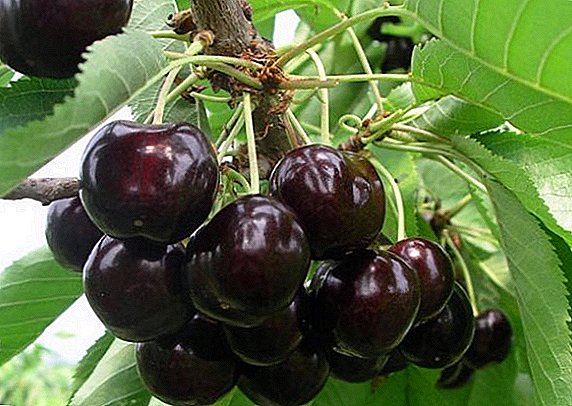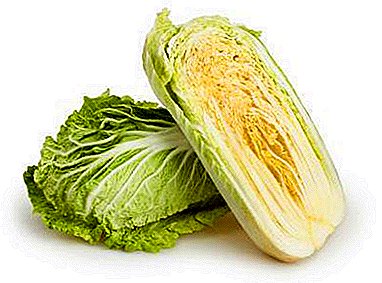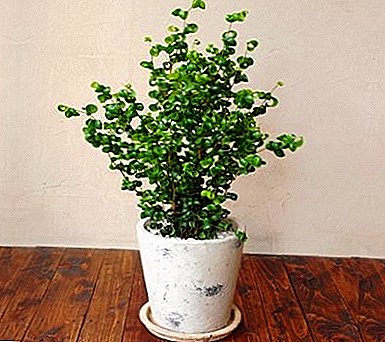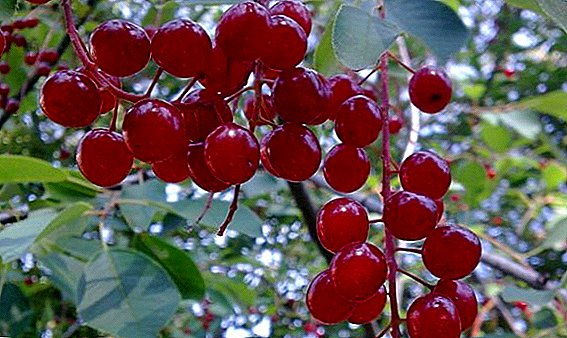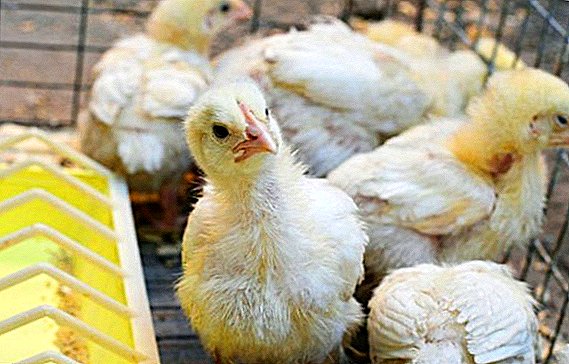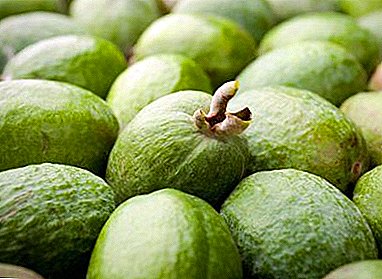
Feijoa happens from the family of Myrtle, family Akka. Also called Akka Sellova or pineapple grass.
Homeland - South America. In 1900, the plant was brought to Yalta, and then spread throughout the Crimea.
Where is Feijoa grown? The bush grows in the south of Russia, in Georgia, Turkmenistan. Where the climate is warm Feijoa is grown outside where is cold - on the windowsill or in the winter garden.
How to grow feijoa at home, how to plant, features of care and photos of pineapple grass - you will find everything you need in this article.
Outdoor cultivation
 Akka can be a decoration of any garden or home. So how to grow feijoa in the garden?
Akka can be a decoration of any garden or home. So how to grow feijoa in the garden?
Feijoa appreciate the aesthetic appearance, beautiful flowering and tasty and healthy fruits.
When growing feijoa in the open field to form a plant can be a bush and a tree.
Attention! To grow pineapple grass in the open ground can only be warm climates. If your region has cold winters, you can plant a feijoa room.
The plant can withstand temperatures as low as -10. With a stronger frost - Akka freezes to the root and in the spring begins to grow again.
If you want to decorate your garden with pineapple grass, and you do not live in the Crimea or in the Caucasus, you can “move” the bush to the winter garden for the winter.
These are the features of cultivating acca on the open field. As feijoa grows at home, read on.
Growing at home
Pineapple grass refers to unpretentious plants. Therefore, at home feijoa perfectly take root.
When growing feijoa at home, it is important to remember that the plant is light-requiring, but direct rays can cause burns, so it’s worth keep the plant in diffused light. In the summer, it is recommended to take the battery out to fresh air - to the balcony or to the street.
IMPORTANT! If you want your feijoa to bear fruit, grow varieties that are self-pollinated. Such as Nikitinsky fragrant, Crimean early, Superg.
Planting, soil requirements
How to plant feijoa, if climatic conditions allow? It is possible in March - April to plant acu in open ground. When planting and caring for feijoa in the garden special conditions are not required. When planting feijoa seedlings, they should be placed at a distance of 4 m from each other.
Before planting feijoa at home, you need to buy a substrate for planting room akka, or you can prepare it yourself: mix turf and hardwood in equal proportions, peat and sand.
IMPORTANT! For pineapple herb well, when the soil is slightly acidic, air-and moisture-permeable.
It is necessary to transplant a houseplant every year for the first 3 years, then - once every 2 - 3 years. With each transplant, a pot is taken 8 to 10 cm more than the previous one.
A clod of earth around the root is left. If the root system is very extensive, you can trim a little before placing it in a new pot.
Lighting, humidity and watering
 Feijoa, like all southern inhabitants, loves the light. Therefore, at home, you need to keep it on the sunny side, and in a warm time to make a balcony or street.
Feijoa, like all southern inhabitants, loves the light. Therefore, at home, you need to keep it on the sunny side, and in a warm time to make a balcony or street.
In case of insufficient lighting, the acca does not bear fruit, the shoots are drawn out and the plant loses its decorative appearance.
Worth Protect pineapple grass from scorching direct rays. And in case of insufficient illumination, in order to grow feijoa at home, it is necessary to illuminate with fluorescent lamps.
Akka loves water. Watering in the summer should be abundant, but make sure that the soil does not swamp. Water as the top layer dries. In winter, watering should be moderate, but not allowed to dry.
IMPORTANT! The plant is comfortable in humid air. Therefore, if your feijoa is its home plant need to spray. The more the better. Winter is also sprayed, but with warm water and less.
Temperature conditions
During the formation of feijoa flowers, a temperature of 21-24 ° C is needed.
In winter, the acca rests, 10-14 ° C will be enough.
Garden trees are kept in the winter -10, some up to -15.
Breeding
There are several ways of feijoa breeding:
- seeds. Seeds are obtained from ripe fruits. Seeds are separated from the pulp, washed and dried. By planting such material is valid for 3 years. Before planting, seeds are disinfected, for example, with a weak solution of manganese.
Seeds are poured on the ground and sprinkled on top of a small layer of soil. Put a plastic bag on the pot. Clean in a warm dark place. Light will be needed when the seeds germinate. You can, of course, buy seeds in the store, but it is better to prepare yourself;
- cuttings. Cut cuttings 8 - 20 cm with several sheets, it is better to take from the middle of the crown. Do it in the late fall - early winter. You can hold before planting about a day in the root stimulator. Then stuck into the soil and cover with a jar or cellophane. Periodically, you need to air and water. Planted in a permanent place after the appearance of the roots;
- root processes. The most convenient way if you already have feijoa. When transplanting part of the roots carefully separated and deposited.
Growing feijoa from seed is a very painstaking process. And the fruits will appear only after 5 - 6 years. Propagation by cuttings is convenient if there is no plant from which to take part of the root. Because root seating gives the best results.
Growth process
 Akka refers to the fast-growing. Height depends on the conditions of detention.
Akka refers to the fast-growing. Height depends on the conditions of detention.
At home, it grows 1 - 2 m, in the garden - up to 6 m (on average 2 - 3 m).
The root system is growing. Therefore, when transplanting It is recommended to remove some of the roots.
Trimmed parts can be an excellent fit. To keep the tree from growing high, pluck young shoots 20 cm high.
Strong pruning is not recommended. this will reduce fruiting. It is only necessary to remove the extra branches in the case of too thick crowns and cut off the sick and dry shoots.
The life of feijoa is very different, depending on the temperature, watering, lighting. In Sochi there are instances that are over 70 years old.
For good growth and yield need to feed from spring to autumn. It is better to fertilize alternately with organic and mineral fertilizers every 2 to 4 weeks.
Bloom
The plant blooms very nicely - feijoa flowers are white on the outside, and inside are crimson in color, with long, bright stamens.
The feijoa flowering period is long (up to a month). At home - from May to June. In open ground, under favorable conditions, blooms in June.
How feijoa blooms in the photo below:





Fruit
The ovary of the feijoa begins to form after 3–4 years if grown from a cutting, after 5–6 years, when the feijcho seeds multiply. If the grade is not self-pollinated, need to grow several copies.
The shape of the berries are similar to lemons, 4 - 7 cm long. The taste resembles kiwi, strawberries and pineapple at the same time. Maturation occurs in October - December. Ripe fruits are showered from the tree. Under favorable conditions, in a warm climate, one bush produces 5–30 kg of fruit.
Application of fruits
In addition to the pleasant taste, feijoa has a lot of useful qualities. The fruits contain:
- Iodine. In large quantities in the composition of water-soluble compounds that are easily absorbed by the body. The daily norm of an adult is provided by 1 -2 fruits.
- Vitamins, especially C.
- Pectin.
- Cellulose.
- Sugar, acids, essential oils.
 Fruit have good anti-inflammatory properties.
Fruit have good anti-inflammatory properties.
That allows you to use feijoa for the treatment of diseases of the gastrointestinal tract, kidneys, liver, pancreas.
Also used in diseases of the thyroid gland and as a source of vitamin C.
Good helps feijoa to fight Staphylococcus aureus and Escherichia coli. More about the healing properties of feijoa, as well as about who can eat this fruit and who can not, read here.
Interestingly, feijoa, which grow near the sea, has the most useful and tasty fruits.
Properly eating fresh ripe fruits - so the benefits to the body will be maximum. Maturity is checked by the appearance of the pulp: it is transparent in the ripe fruit. If the fruit is a little underripe - it will reach at home in a few days, and if the flesh is darkened, then you can not use it.
The larger the fruit, the more useful it is. Feijoa is used in cooking for making marmalades, jams, beverages. They even make wine from pineapple grass.
IMPORTANT! Despite its exoticism, the fruit does not cause allergies. The only disadvantage is the short shelf life of the product. So without a refrigerator, the fruit will lie only 15 days.
Diseases and pests
There are several problems with feijoa cultivation:
Defeat the false shield.
Young plants are especially vulnerable, which can even lose their foliage. Prevention will be the best measure of struggle - the leaves and stems are periodically washed with a solution of soap.
If the pests still appeared, they are manually shaken off the plant with a soft brush. And then the branches are treated with soapy water. The procedure is repeated once a week up to 5 times. Feijoa covers the ground to avoid soap getting into the soil. Or you can spray the solution of karbofos: 5 g diluted in 1 liter of water. Often two procedures are enough.
 Red spider mite.
Red spider mite.
Appears in low humidity conditions. Warned by regular spraying of the plant.
Fungal diseases.
Possible with waterlogging. Observance of the correct mode of watering will allow to avoid the disease.
In the conditions of the garden, for the prevention of diseases and damage by pests apply a spray of 1% Bordeaux liquid.
Growing feijoa in your home, you will receive not only a beautiful ornamental plant, but also tasty, healthy fruits. Pineapple grass quite easy to clean. Decorate your winter garden with a new exotic specimen.


